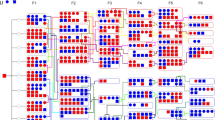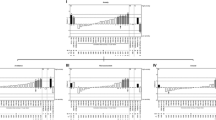Abstract
Rationale: There is ample evidence that rats show large individual differences in their response to dopaminergic drugs, such as apomorphine. Objective: The aim of the present study was to investigate the role of genetic and (early) environmental factors in determining the adult susceptibility to apomorphine. Four experiments were performed: In experiment 1, the original selective breeding of rats for apomorphine susceptibility (leading to APO-SUS and APO-UNSUS rats) was extended and replicated in an independent group of Wistar rats. In experiment 2, APO-SUS males were cross-bred with APO-UNSUS females and vice versa. In experiment 3 APO-SUS litters were cross-fostered to APO-UNSUS mothers or infostered to unknown APO-SUS mothers and vice versa. In experiment 4 APO-SUS and APO-UNSUS rats were maternally deprived on postnatal day 9, for a single 24-h period. Methods: Adult rats were subcutaneously injected with 1.5 mg/kg apomorphine and their gnawing response was automatically recorded in a gnawing box for 45 min. Results: In experiment 1, the original breeding was extended up to generation 24, leading to a strong and consistent difference in gnawing scores. The replication experiment also succeeded in differentiating APO-SUS and APO-UNSUS. The cross breeding experiments showed that the APO-SUS/UNSUS offspring showed gnawing scores in between the original selection lines. Cross-fostering APO-SUS with APO-UNSUS significantly reduced the gnawing response in the offspring, whereas it did not affect the gnawing score in the APO-UNSUS animals. Maternal deprivation had the opposite effect: increase in gnawing response in APO-UNSUS, with no effect in APO-SUS. Conclusion: The results show a clear-cut contribution of both genetic and early environmental factors to the susceptibility of apomorphine.
Similar content being viewed by others
Author information
Authors and Affiliations
Additional information
Received: 5 January 1999 / Final version: 8 August 1999
Rights and permissions
About this article
Cite this article
Ellenbroek, B., Sluyter, F. & Cools, A. The role of genetic and early environmental factors in determining apomorphine susceptibility. Psychopharmacology 148, 124–131 (2000). https://doi.org/10.1007/s002130050033
Issue Date:
DOI: https://doi.org/10.1007/s002130050033




